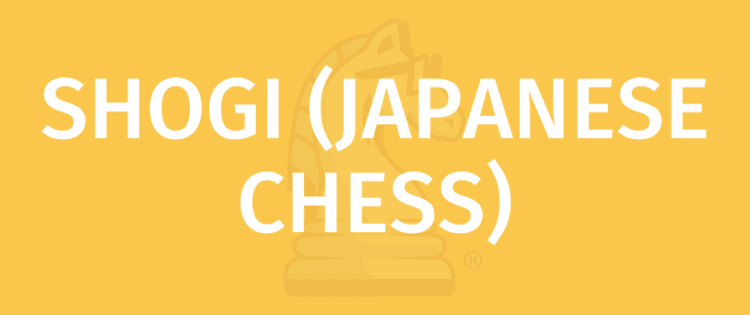
OBJECTIVE OF SHOGI: To capture the opponent’s king
NUMBER OF PLAYERS: 2 Players
MATERIALS: A Japanese chessboard, 40 shogi pieces
TYPE OF GAME: Strategy Board Game
AUDIENCE: All Ages
INTRODUCTION TO SHOGI
Shogi is believed to derive from the ancient Indian game “Chaturanga” as similar to Chess. It is unknown how Shogi was introduced to Japan, but it has been around from the Heian period (794 to 1185).
CONTENTS
The game consists of a board with 81 squares. Each player has 20 pieces including 9 pawns (歩), 2 lances (香車), 2 knights (桂馬), 2 silver generals (銀), 2 gold generals (金), 1 bishop (角), 1 rook (飛車), 1 king (王).
SETUP
The setup is illustrated in the picture below. Just like Chess, the pawn acts as the first line of defense and the row behind is set up as follows: The rook (right) and the bishop (left) occupy one space in from the edge on the second row. The rest of the pieces are set up on the row nearest to the player: The lances occupy the corners, the knights are placed next to them, followed by the silver generals. The gold generals are placed next to the silver generals and the king is then placed on the remaining open square.
HOW TO START
Each player takes 5 pawns and tosses them on the board like dice. Count the number of promoted pawns facing up, which determines who opens the game. The player with the higher number of promoted pawns facing up goes first.
Moving your pieces:
There are a total of 8 types of pieces and the movement is different depending on the type of pieces. Only the knights (horses) can jump over a piece that stands in its way.
King (王)
The king can move one square in all directions. If you capture this piece, you win the game.
Gold general (金)
The gold general can move one square to any direction other than diagonally backward.
Silver general (銀)
The silver general can move one square diagonally or one square directly forward. But it cannot move sideways.
Bishop (角)
The bishop can move any number of free squares on the diagonal.
Rook (飛車)
The rook can move any number of free squares in the four orthogonal directions.
Lance (香車)
The lance can move any number of free squares directly forward. But it cannot move backward or sideways.
Knight (桂馬)
The knight moves in the shape of an “L” moving two squares in one direction and then one more square at a 90° angle. But it can only move forward.
Pawn (歩)
The pawn can move one square directly forward. It can only move forward.
PROMOTION
Promotion is optional and there are three cases where pieces can be promoted:
- When entering the opponent’s promotion zone (the last three rows)
- When moving inside the opponent’s promotion zone
- When moving out of the opponent’s promotion zone
The king and the gold general cannot be promoted. The promoted silver general, the promoted knight, the promoted lance and the promoted pawn can move the same way as the Gold general. The promoted rook (dragon) can move one square diagonally in addition to the four orthogonal directions. The promoted bishop (horse) can move one square orthogonally in addition to the diagonal.
CAPTURING
The same rules as regular chess apply. When you move a piece, you can capture the piece by taking the place of the opponent’s piece. The pieces captured are placed next to the board on each player’s side as your holding. Once captured, any promoted pieces return to unpromoted pieces.
DROPS
You can drop the captured piece on any free square on the board at any time of your turn. The following restriction applies:
- You cannot drop a piece on a square where it cannot make a legal move.
- You cannot drop a pawn to line up two or more of your pawns vertically.
- You cannot drop a piece on a square where the opponent can checkmate.
ATTRACTION & TIPS
Shogi and Chess have the same roots and share a lot in common in terms of the objective and the basic movement of pieces. However, Shogi uses 8 pieces and a 81-square board, which makes the game more complicated than Chess. In addition, in shogi, players can use captured pieces as their own pieces.
In Japan, Shogi is a highly-regarded traditional game. Professional Shogi players are well-known and celebrated. Famous pro-players are covered by the major media and official matches are live-streamed on nationwide television. The famous pros are all Japanese such as Yoshiharu Habu and Souta Fujii. Female players are catching up and a foreign female shogi pro has appeared as well.
In principle, only professional shogi players can participate in the title match. Shogi players are ranked by dan and all major title tournaments take place in Japan. Currently, there are eight major titles and the amount of prize money can reach up to 44 million yen (approximately 385,000USD).
- Comprehensive Guide to the Board Game Go (weiqi, baduk) - January 23, 2024
- Are Creative Suites Changing Gaming - October 30, 2023
- How Classic Games Have Been Reimagined for Modern Audiences - October 5, 2023